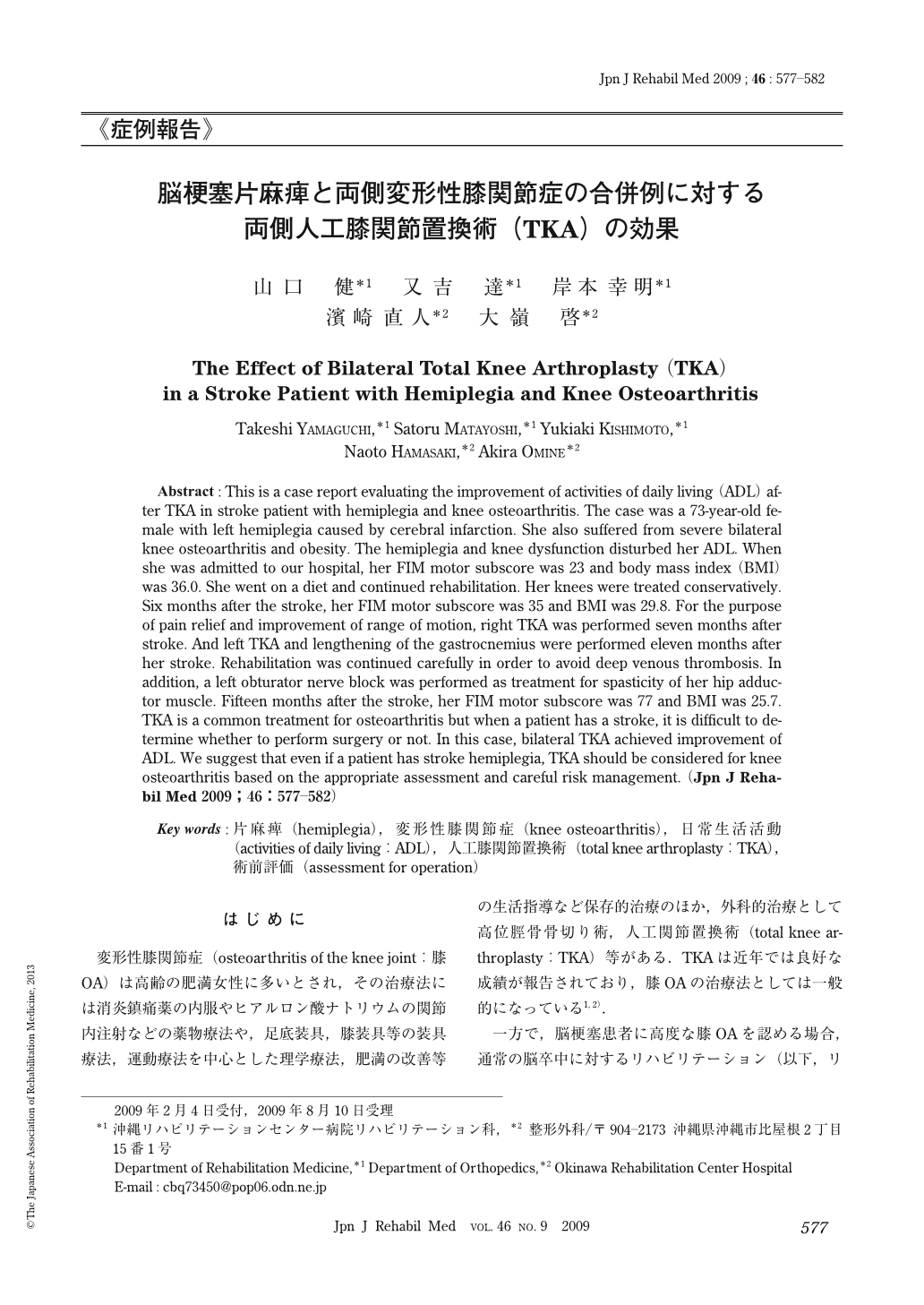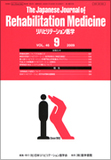Japanese
English
- 販売していません
- Abstract 文献概要
- 1ページ目 Look Inside
- 参考文献 Reference
はじめに
変形性膝関節症(osteoarthritis of the knee joint:膝OA)は高齢の肥満女性に多いとされ,その治療法には消炎鎮痛薬の内服やヒアルロン酸ナトリウムの関節内注射などの薬物療法や,足底装具,膝装具等の装具療法,運動療法を中心とした理学療法,肥満の改善等の生活指導など保存的治療のほか,外科的治療として高位脛骨骨切り術,人工関節置換術(total knee arthroplasty:TKA)等がある.TKAは近年では良好な成績が報告されており,膝OAの治療法としては一般的になっている1, 2).
一方で,脳梗塞患者に高度な膝OAを認める場合,通常の脳卒中に対するリハビリテーション(以下,リハ)により麻痺や認知機能が改善しても,膝関節の痛みや可動域制限が日常生活活動(activities of daily living:ADL)を妨げる.通常であればTKAの適応となる膝関節も,片麻痺のある場合は手術の適応について判断が困難である.
今回脳梗塞による左片麻痺に両膝OA,高度の肥満を合併した患者に対しリハや食事療法のみではなく,両側TKAおよび尖足に対する腓腹筋延長術,股関節内転筋の緊張に対する閉鎖神経ブロックを行った.手術前後のADLの変化より,手術の効果と適応について検討したので報告する.
Abstract : This is a case report evaluating the improvement of activities of daily living (ADL) after TKA in stroke patient with hemiplegia and knee osteoarthritis. The case was a 73-year-old female with left hemiplegia caused by cerebral infarction. She also suffered from severe bilateral knee osteoarthritis and obesity. The hemiplegia and knee dysfunction disturbed her ADL. When she was admitted to our hospital, her FIM motor subscore was 23 and body mass index (BMI) was 36.0. She went on a diet and continued rehabilitation. Her knees were treated conservatively. Six months after the stroke, her FIM motor subscore was 35 and BMI was 29.8. For the purpose of pain relief and improvement of range of motion, right TKA was performed seven months after stroke. And left TKA and lengthening of the gastrocnemius were performed eleven months after her stroke. Rehabilitation was continued carefully in order to avoid deep venous thrombosis. In addition, a left obturator nerve block was performed as treatment for spasticity of her hip adductor muscle. Fifteen months after the stroke, her FIM motor subscore was 77 and BMI was 25.7. TKA is a common treatment for osteoarthritis but when a patient has a stroke, it is difficult to determine whether to perform surgery or not. In this case, bilateral TKA achieved improvement of ADL. We suggest that even if a patient has stroke hemiplegia, TKA should be considered for knee osteoarthritis based on the appropriate assessment and careful risk management.

Copyright © 2009, The Japanese Association of Rehabilitation Medicine. All rights reserved.


